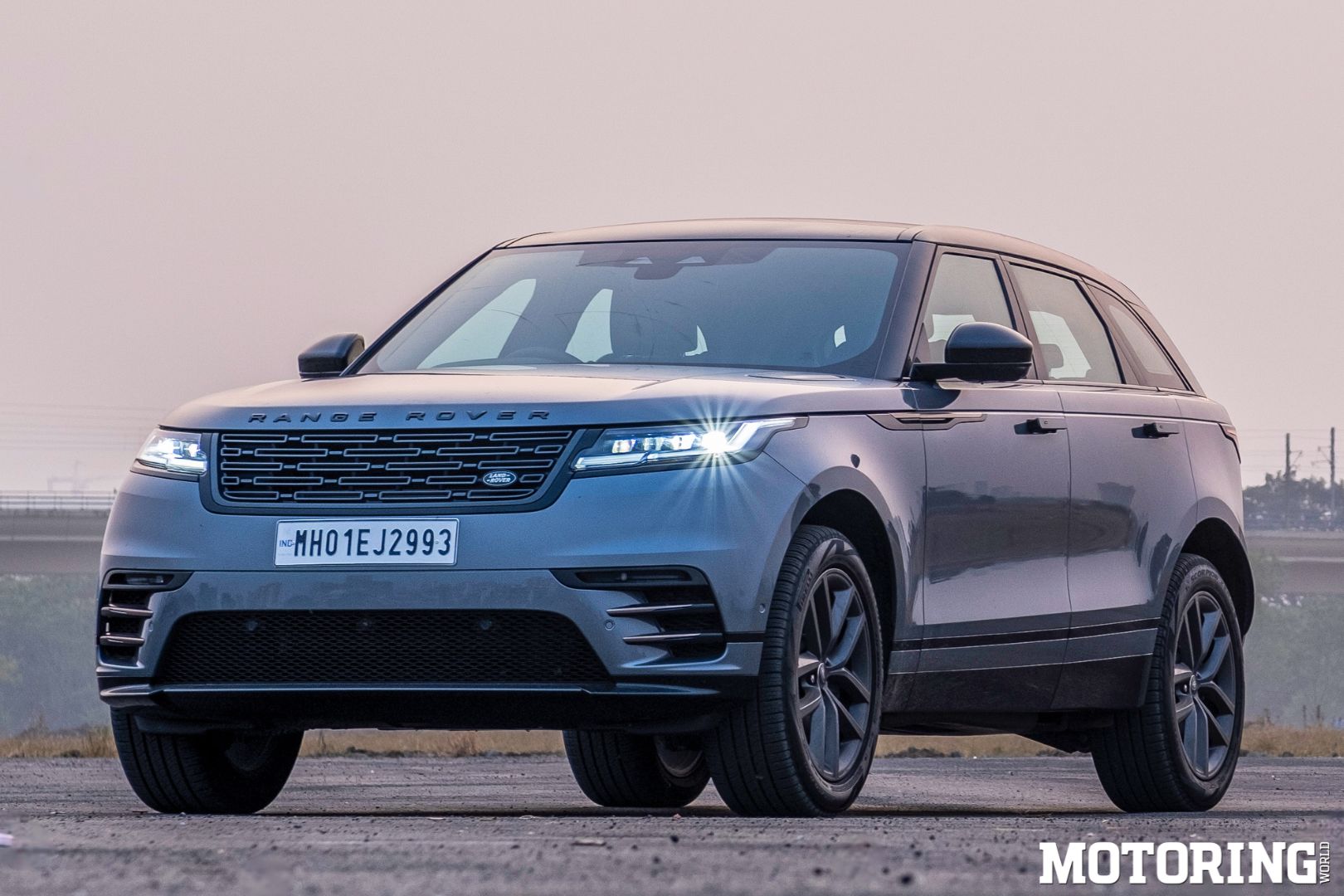The Range Rover Velar often finds itself in the unique position of being in the middle of the Range Rover line-up. Much like the proverbial middle sibling, it sometimes contends with what’s commonly referred to as the ‘middle child syndrome’ — overshadowed by its larger, more established sibling, the full-sized Range Rover, and occasionally overlooked in favour of the sleeker, more attention-grabbing models. However, this analogy belies the Velar’s true essence, for it embodies a distinct identity that resonates with a specific demographic of folks who want the Range Rover but whose bank account limits them to a Velar and this discerning demographic that the Velar seems to effortlessly cater to.
Now the latest iteration of the Velar, it becomes apparent that it has undergone subtle yet significant refinements, both inside and out. While maintaining its signature silhouette and distinctive exterior design cues, which you are reminded of when you unlocked the car and the puddle lights beam the sleek side profile silhouette of the Velar. While the overall design of this luxury SUV hasn’t changed much, JLR has changed the design of the front grille and made tweaks to the front bumper to aid aerodynamics. The SUV also features a new set of alloy wheels. Changes to the rear are minimal, with the most noticeable difference being the new LED guide lamps in the tail-lights. Moreover, the ‘Pixel LED’ headlights are now offered as standard. You can see where Gerry McGovern, chief creative officer of Land Rover and his team just keep fine-tuning their designs, and it’s no wonder the Velar got a Red Dot Design Award.
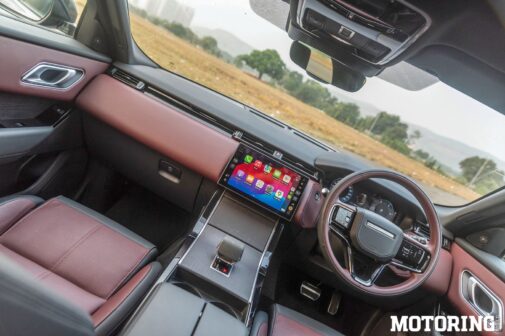
Now that we’ve admired the Velar’s captivating exterior, it’s time to turn our attention inward and address a trend that I believe should fade away: the minimalist culture of replacing physical buttons on the dashboard with touchscreen interfaces. While undoubtedly sleek and reminiscent of the iconic designs by Braun Design, the German firm that heavily influenced Apple’s product aesthetics, this minimalist approach sometimes sacrifices functionality for form. Just as we initially lamented the absence of the home button on early iPhones before eventually adapting, we may find ourselves begrudgingly accepting this shift in automotive interiors. However, I remain hopeful that manufacturers will reintroduce physical buttons, balancing modernity with practicality. With that rant aside, let’s get into the interior of the Velar and explore its design elements and features. In the 2024 Velar interiors, JLR has implemented changes, notably a revamped dashboard design featuring fewer physical controls on the centre console.
The most significant update is the introduction of the new 11.4-inch Pivi Pro touchscreen, consolidating various in-car functions, including driving modes. While this transition to a touchscreen interface may seem daunting, essential features like climate controls are conveniently placed on the right side of the screen for easy access. Despite the shift away from physical buttons, there’s a lingering desire for their presence. However, the touchscreen layout is intuitive, typically requiring just two taps to execute most functions. Additionally, the Pivi Pro unit supports Wireless Apple CarPlay and Android Auto, complemented by wireless charging capabilities.
Other luxurious amenities include heated/ventilated massage seats, a panoramic sunroof, an air purifier, a premium 12-speaker Meridian audio system, and more. Furthermore, the Velar offers four-zone climate control and customizable ambient lighting, ensuring a comfortable and immersive driving experience. Notably, the Velar boasts superior interior space compared to its coupe rivals, providing ample headroom for occupants. The roomy cabin feels light and pleasant, since it provides plenty of headroom and legroom, especially for taller passengers. The interior is dominated by high-quality materials that give off an aura of refinement and craftsmanship, such as soft leather, brushed aluminium, and wood trims. With very few gaps and close tolerances between panels, the fit and finish are excellent.
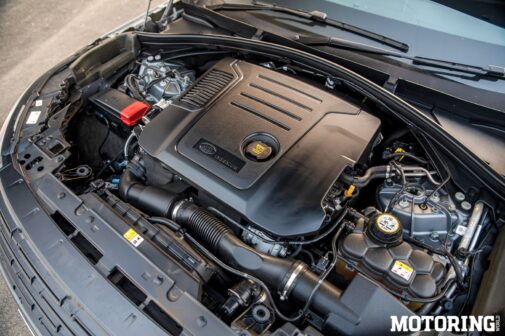
The Velar offers two engine options: a 2.0-litre diesel and a 2.0-litre petrol engine. The diesel variant delivers 201 bhp and 43.84 kgm of torque, propelling the vehicle from zero to 100 kph in 8.3 seconds. In contrast, the petrol engine produces 296 bhp and 40.78 kgm of torque, achieving the same acceleration in just 7.5 seconds. Both engines are paired with an eight-speed automatic transmission and Terrain Response 2 system. During our test drive in and around Mumbai, encompassing city and highway conditions, the diesel Velar returned an impressive fuel efficiency of 14 to 17 kpl. However, what truly impressed us, was the refinement of the diesel powertrain, offering a smooth and responsive driving experience.
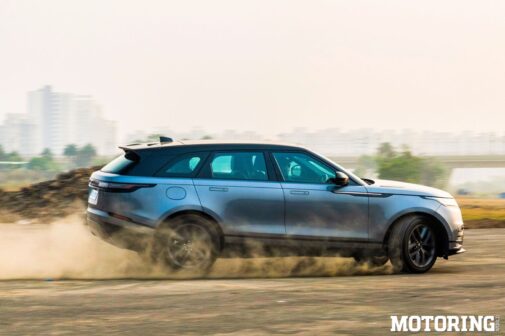
The Velar skillfully moves between the opposing terrains of off-road agility and on-road sophistication. Thanks to its air suspension, which easily absorbs bumps and uneven surfaces, it has a smooth and opulent ride. The Velar separates you from the outside world and provides a calm and comfortable ride, whether you’re driving on a highway or through a city. The cabin’s quiet, which is a result of sophisticated soundproofing and aerodynamic design, adds even more tranquillity. But comfort doesn’t come at the expense of handling with the Velar. Its confident handling is made fun by its sensitive suspension and precise steering, which let you manoeuvre through tight spaces and turns with ease. It isn’t a sports car, but it has a nice balance of stability and agility that makes it ideal for aggressive driving without sacrificing its opulent feel.
The Velar’s Terrain Response technology, however, is what makes it magical. With a simple turn of a dial, this clever technology serves as your off-road co-pilot, adjusting the vehicle’s settings to suit different types of terrain. With a selection of modes including Comfort, Grass/ Gravel/Snow, Mud/Ruts, Sand, and the optional Dynamic mode, the Velar becomes a formidable off-road vehicle.
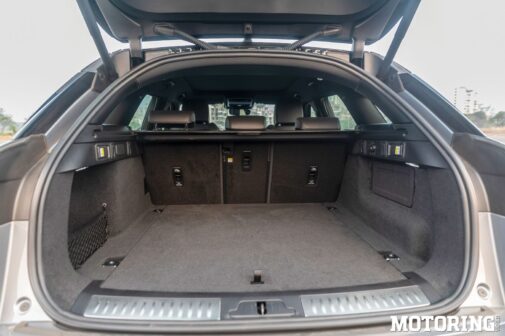
From refreshed interior finishes to nuanced exterior styling elements, the Velar exudes an air of sophistication and refinement that speaks to its evolution within the Range Rover lineup. Its blend of luxury, performance, and off-road capability makes it a compelling choice for those seeking a versatile and stylish SUV. The Range Rover Velar presents a compelling proposition for those in search of premium comfort, stylish design, and off-road capability. Priced at Rs 94.3 lakh (ex-showroom) in India, it competes directly with rivals like the Mercedes-Benz GLE and BMW X5. With its exquisite interior, smooth ride, capable off-roading features, and a plethora of advanced technology, the Velar stands out in its segment. However, its premium price, touchscreen reliance, and limited cargo space may pose challenges compared to competitors. Nevertheless, for those prioritizing luxury and occasional offroad adventures, the Velar remains an attractive choice, provided the budget allows for it.





